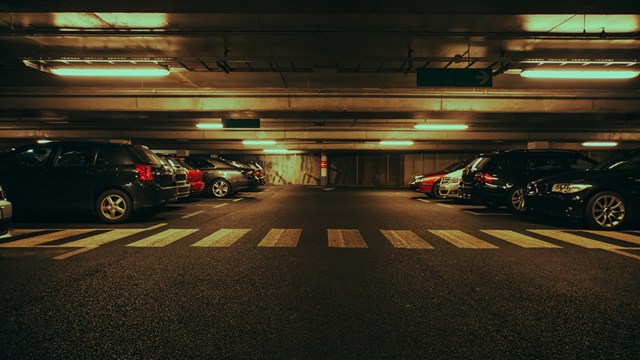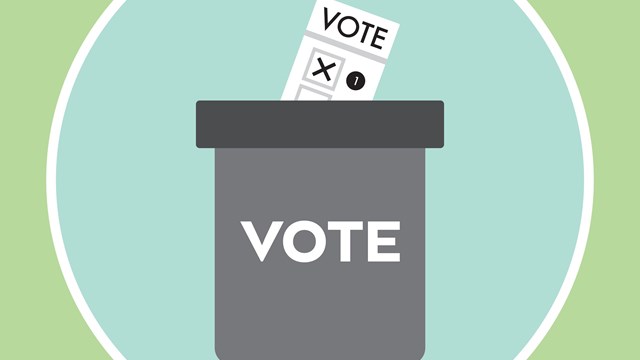Nearly two months into Mayor Michael Bloomberg's suspension of glass and plastic recycling - a move designed to trim $40 million from the city's budget - New Yorkers are slowly getting used to the idea of tossing their Pepsi and beer bottles out with their regular trash.
Looking for ways to save money in the wake of the recent economic downturn and the aftershocks of September 11th, the mayor announced his plan - paper and metals to be recycled as normal (because they're the easiest materials to recycle and have the best market value), plastics suspended for one year, glass for two - to choruses of both approval and doubt; approval from bottom-liners at City Hall anxious to cut costs, and doubt from environmental groups and New Yorkers concerned about where all the unrecycled trash will go, and how it will impact the environment in and around the city.
To address the concerns of both groups, the mayor has put together a task force to investigate ways of making the removal of New York's City 12,000 tons of trash per day more economically and environmentally sound. Bloomberg also recently outlined a plan to open waterfront trash stations in each borough so that garbage can be hauled away by barge, rather than being transported by exhaust-producing trucks to landfills in other states.
The plan sounds simple enough, but the transition has not been altogether smooth. Over the last several weeks, the New York City Sanitation Department (DSNY) has received several thousand phone calls and a slew of e-mails regarding the new policy, and, according to spokesman Vito Turso, those making themselves heard are not the ones happy about a simpler disposal routine. There has been confusion: What are the rules, exactly? What color bags should be used? (For the record, according to the DSNY: clear for recycling, black for garbage; no more blue.) And there has been some general annoyance over the mayor throwing the brakes on a program that in the 21st century seems de rigueur. (The department's 24-hour information line can be reached at 212-219-8090.)
There have also been some procedural kinks in the new system. Building supers have noted that because people tend to have less metal to throw away than anything else, many of their tenants seem to have lost the desire to separate at all, throwing metal in with the rest of their garbage.
Litter has also been on the rise, as bottle and can collectors rip open bags in search of redeemable items. Some residents have addressed this problem by putting out bags of bottles and cans in front of their buildings or on street corners where can collectors and the homeless can find them easily, without resorting to trash bag-mangling.
According to Mark Izeman, an Upper West Side co-op board member and a senior attorney for the Natural Resources Defense Council, "Before July 1 [when the recycling program went into effect], a lot of supers had an informal agreement with homeless people to avoid them coming down to look in the blue bins on Friday nights. Now we're asking everyone to put glass in black bags for our super to set aside. It's not good for a co-op to have homeless people going through the garbage, and it's risky to the homeless because they can get hurt."
Separating out glass also keeps it from breaking and ripping open bags and prevents it from turning compactor rooms into shard-filled danger zones.
Glen Stoltz, the superintendent of a ten-story building in TriBeCa, wrote a letter to his tenants asking them not to put glass down the compactor chute. He also bought an extra recycling container for each floor of his building. Now, instead of having one bin for metal, glass and plastic and one for paper, there is one for metal, one for glass and one for paper. As per the DSNY request, he puts glass into a black garbage bag and disposes it like regular trash. Metal and paper go into clear bags instead of the old blue ones.
Another option is to have glass and plastic removed by We Can, a nonprofit redemption center in Manhattan that works with the poor and the homeless. The money redeemed by We Can goes toward housing, medical care and clothing for the group's clients
Arrangements can be made to have bottles and cans picked up at residential or office buildings (We Can requests that there be at least 40 tenants in the building for pick-up), or they can be dropped off regardless of building size at the organization's redemption center on West 52nd Street and 11th Avenue.
Catherine Collins, the director of development at We Can, said that over the last two months the organization has received about 100 more phone calls than normal, which the group takes as a sign that some New Yorkers are looking for a way around tossing their no-longer-recyclables.
Untouched by the mayor's bottle-ban is redemption through the "bottle bill" program - so called because of the bill that established it in New York in 1983. A five cent deposit can still be redeemed on most bottles, with the exception of "new age" drinks like bottled water and Snapple, by anyone at most supermarkets. Redeemed bottles are returned to the manufacturer and recycled.
Two years ago, a consultant for the DSNY reported that almost 200 tons per day could be reduced from the city's 2,300 tons of recycled material just through the bottle bill - if only New Yorkers were more proactive.
According to Izeman, redemption in the city is about 50 percent, compared with 70 percent statewide. "In the city it's more of a pain in the neck to return bottles when you don't have a car, and bodegas are often less accommodating because they have less room to take material back." But 50 percent isn't too shabby, considering how many bottles of soda, juice, and sports-drinks New Yorkers empty out and throw away every day.
The $40 million in projected savings with the new recycling parameters will come from cutting the costs of glass and plastic processing and collection. In June, the nine-year contracts the city had with recycling processors expired. Renewed contracts would have doubled the processing bill to about $120 per ton of trash, according to DSNY Deputy Commissioner Steven Lawitts. In addition, collection costs will decrease with fewer recycling trucks being sent out. "Given our current budget concerns, it would not be wise to continue squandering money," Lawitts said in a recent statement from the DSNY.
The plan's not just about saving that $40 million, however. Along with his move to suspend certain recycling programs, Bloomberg also is proposing an overhaul of New York City's long-term trash disposal policy that would continue to cut costs while reducing impact on the environment. Opening up waterfront stations to remove trash, for example, would eliminate the city's reliance on landfills as far away as Virginia and Ohio and would quell some environmentalists' concerns over the pollution caused by garbage-transport trucks. While changing transportation methods and building new stations might cost the city money in the short-term, according to the mayor's office, "We are not going to continue to give our kids lung diseases, no matter what the cost is."
The new system calls for rebuilding eight existing waterfront stations in Manhattan, the Bronx, Brooklyn and Queens that were once used to send barges of trash to the Fresh Kills landfill in Staten Island, so that they can accept garbage from trucks, compact it, and pack it in sealed containers to be sent by barge to nearby ports. From there the containers would be placed on ships or trains and sent to landfills. Where the trash would go and how much the plan would cost has yet to be addressed.
DSNY Commissioner John Doherty lauded the new plan. "While there are over 3,500 active landfills in the United States, only a handful are close to large urban centers and New York trucks most of its garbage 80 miles or more from the city. Disposal costs for solid waste have grown from $44 per ton in 1997 to over $88 per ton in 2001. Our plan will broaden our disposal options by providing access to more landfills and freeing us from expensive hauling contracts," Doherty says.
Staten Island residents also can breathe a sigh of relief as the waterfront plan pushes the idea of re-opening Fresh Kills - closed for over a year now, aside from processing wreckage from the World Trade Center site - further toward the realm of obsolescence. The DSNY has maintained from the beginning that Fresh Kills is "absolutely not" under consideration as a landfill site, but there was a ripple of worry nonetheless among Staten Islanders who've had quite enough of being the rest of the city's dumping ground.
"The removal of waste and keeping the city clean is a massive undertaking," Bloomberg says in a recent statement. "It involves more than 2,000 trucks, nearly 10,000 men and women and almost a billion dollars a year in direct cost to the city. Since the closing of Fresh Kills, the city now exports 100 percent of its waste at a cost of more than $313 million a year through a complicated system of trucks, barges and trains. By upgrading our Marine Transfer Stations, the city will have significantly greater flexibility in disposal options, vastly mitigated environmental impact and lessened vulnerability to any single disposal method or market."
The mayor's waterfront option also eases the public's dread of opening incinerators in the city - a disposal solution that usually involves much debate and eventual compromise between the city and concerned neighbors of proposed incinerators. Such was the case when the sewage treatment plant was opened near Washington Heights - in conjunction with the new River Bank Athletic Facility that roosts above it.
Meanwhile, New Yorkers are slowly coming around to a new way of tossing. Some are even embracing it. "I don't know, it kind of makes my life easier," says Julia Rainer, an Upper East Sider. "And a year isn't that long in the end. Soon enough we'll be back to regular recycling."







Leave a Comment